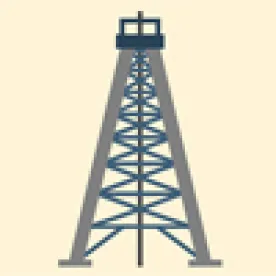Takeaway: When arguing that objective evidence of non-obviousness exists, a Patent Owner must support its arguments with sufficient relevant evidence that demonstrates a nexus between the evidence of secondary considerations and the merits of the claimed invention.
In its Final Written Decision, the Board found that claims 1-20 of the ’362 patent are unpatentable. The subject matter of the ’362 patent relates to oil field production equipment and, in particular, to the use of polymer liners in production tubing strings used in wells producing oil by rod pumping.
The Board began with claim construction, stating that the terms are construed according to their broadest reasonable interpretation in light of the patent specification and that claim terms are given their ordinary and customary meaning as would be understood by one of ordinary skill in the art in the context of the entire disclosure. In its Decision to Institute, the Board declined to provide an express construction for the term “to eliminate contact between said sucker rods and said tubing string.” It reaffirmed that decision here.
The Board then looked at whether claims 1-20 are unpatentable under 35 U.S.C. § 103(a) as obvious over Lacy, Oster and Admitted Prior Art. In response to Petitioner’s obviousness argument, Patent Owner argued that (1) a person of ordinary skill in the art would not have been motivated to combine Lacy with Oster and (2) there is objective evidence of non-obviousness. The Board was not persuaded by either argument.
Petitioner contended that a person of ordinary skill in the art would have been motivated to combine Lacy and Oster in order to “reduc[e] wear of the sucker rods and tubing string, improving their durability and thereby increasing oil production from the reciprocating well.” In response, Patent Owner argued that a person of ordinary skill in the art would not have been motivated to combine Lacy and Oster because they address different problems. Petitioner countered that (1) Patent Owner failed to address the motivation articulated by Petitioner and (2) Patent Owner improperly focuses on metal-to-metal contact rather than wear generally. The Board agreed with Petitioner that Patent Owner improperly focuses on metal-to-metal contact and further determined that the problems addressed by Lacy and Oster are not that different. After rejecting Patent Owner’s arguments, the Board concluded that Petitioner has shown sufficiently “articulated reasoning with some rational underpinning to support the legal conclusion of obviousness.”
The Board next turned to secondary considerations and analyzed whether the totality of evidence submitted, including objective criteria of nonobviousness, lead to a conclusion that the challenged claims would not have been obvious to one of ordinary skill in the art. Patent Owner alleged long-felt need, failure of others, commercial success, and copying as objective evidence of non-obviousness. After explaining that “evidence of nonobviousness must be commensurate in scope with the claimed invention” to be relevant and that “there must be a nexus between the merits of the claimed invention and the evidence of secondary considerations” for the evidence “to be accorded substantial weight,” the Board determined that Patent Owner did not provide sufficient credible evidence to support its allegation. With respect to long felt need, the Board was not persuaded that the alleged need was unmet. For failure of others, the Board determined that Patent Owner did not submit evidence of any company’s attempt (and failure) to use tubing sections that would infringe the independent claims. Next, with respect to commercial success, the Board determined that the Patent Owner did not establish nexus between the claimed invention and commercial success. Finally, the Board found that the evidence presented to show copying (a know-how license and uncorroborated allegations of infringement) was not sufficient to show that Petitioner copied Patent Owner’s products. Weighing the evidence of obviousness based on the combination of prior art and the alleged secondary considerations, the Board stated that it concluded that “weak evidence of non-obviousness does not overcome Petitioner’s strong evidence of obviousness.” Accordingly, the Board determined that Petitioner established that claims 1-20 were unpatentable as obvious.
Moore Rod & Pipe, LLC v. Wagon Trail Ventures, Inc., IPR2013-00418
Paper 38: Final Written Decision
Dated: October 2, 2014
Patent: RE 36,362
Before: Jennifer S. Bisk, Georgianna W. Braden, and Matthew R. Clements
Written by: Clements
Related Proceedings: Western Falcon, Inc. v. Moore Rod & Pipe, LLC, 4:13-cv-02963 (S.D. Tex.).



 />i
/>i

